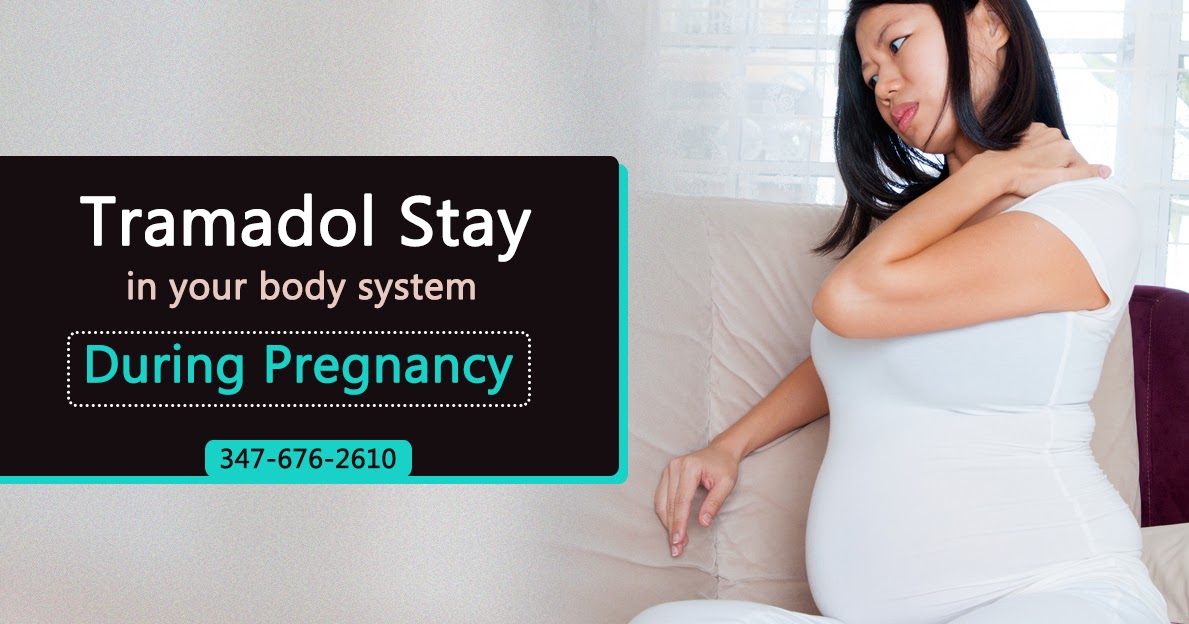Tramadol During Pregnancy

Contents:
- Instructions for Use
- Pharmacokinetics
- Indications
- Contraindications
- Usage and Doses
- Side Effects
- Use in Pregnancy and Breastfeeding
Instructions for Use
Tramadol is an opioid pain medication, a derivative of cyclohexane. It acts as μ-opioid receptor, δ-opioid receptor, κ-opioid receptor agonist. The racemate 50 % (+) and (-) isomer. The isomer (+) is a pure opioid receptor agonist, has low tropism and does not have the pronounced selectivity towards different subtypes of receptors. The isomer (-) acting as norepinephrine reuptake inhibitor, activates the descending noradrenergic influence.
This process obstructs the transmission of pain impulses in the gelatinous substance of the spinal cord. It causes sedation. In therapeutic doses practically does not inhibit breathing. Provides cough suppression effect. The μ-affinity of tramadol is about 10 times weaker than that of codeine, it can also inhibit serotonin reuptake.
Pharmacokinetics
After the intake, it is completely absorbed from the gastrointestinal tract (about 90 %). Cmax in plasma is achieved within two hours after the administration. Bioavailability of the single admission is 68 % and increases with repeated dosing. Plasma protein binding is 20 %.
Tramadol is widely distributed in tissues. It penetrates through the placental barrier in a concentration equal to the concentration of the active substance in plasma. 0.1 % of the substance is excreted into breast milk. Tramadol is metabolized by demethylation and conjugation to 11 metabolites, of which only 1 is active. Т1/2 — 6-7 h.
It is excreted mainly by kidneys, in case of liver or renal dysfunctions (creatinine clearance less than 80 mL/min) the elimination slows down. The analgesic end-point of 100 mg of tramadol is roughly equivalent to 10 mg of morphine.
Indications
Moderate and strong pain syndrome of different genesis and localization (including malignant tumors, acute myocardial infarction, neurology, injuries). Carrying out of painful diagnostic or therapeutic procedures.
Contraindications

- hypersensitivity;
- acute alcohol or drug intoxication depressing the functions of the CNS;
- epilepsy;
- renal or liver dysfunctions;
- pregnancy, lactation (at the time of treatment is halted), children’s early age (up to 2 years).
Usage and Doses
In severe pain tramadol is administered in doses of 50 mg IM or IV, reintroduction of the drug no earlier than in 30-60 min, dose of rectal administration is 100 mg (reintroduction of suppositories no earlier than in 35 hours). Children aged 2 to 14 years are assigned with oral form of medication (drops) or parenteral injection of 1-2 mg/kg.
In the treatment of chronic pain, the initial dose is 50 mg at night (or 25 mg two times a day), after 5-7 days the dose is increased to reach 100 mg two times a day; if needed the dose is increased to 100 mg 2-4 times a day. The maximum dose regardless of the method of introduction 400 mg per day. Slow titration of dose reduces the likelihood of side effects. In patients with kidney failure the dosing interval should be increased to every 12 hours, and the maximum dose should not exceed 200 mg per day. In patients with hepatic insufficiency, the dose should be limited. In patients of 75 years or older the dose should not exceed 300 mg per day in connection with the increased risk of cognitive impairment.
Neuropathic pain syndromes tramadol presumptive treatment should continue for at least 4 weeks. In patients with chronic neuropathic pain, the efficacy can persist in the long admission for 6 months or more (for a long-term therapy, it is preferable to use drugs with an extended release). Although the risks of drug dependence in tramadol are lower than in other opioids, it can occur in the prologue use. Therefore, tramadol should not be prescribed to individuals prone to the formation of dependency. Sudden cessation of medication can cause a withdrawal syndrome.
Side Effects

The Central Nervous System
- dizziness, weakness, drowsiness, confusion, dysphoria, fatigue, tremor, decreased cognitive abilities;
- in some cases – convulsions of cerebral genesis (for IV uses in high doses or with concomitant administration of neuroleptics);
- in prone individuals can provoke an epileptic seizure.
Cardio-Vascular System
- tachycardia, orthostatic hypotension, collapse.
Digestive System
- dry mouth, nausea, vomiting, epigastric pain, and constipation.
Other
Difficulty urinating, miosis, mydriasis, increased sweating, skin irritating and itching
Contraindications and Precautions
- Tramadol should be used with caution in patients with convulsions of central genesis, drug dependence, confusion, renal and liver dysfunctions, as well as increased sensitivity to other opioid receptor agonists.
- Tramadol should not be used longer than justified from a therapeutic point of view. Prolonged use can cause drug dependency.
- The medicine is not recommended for the narcotic withdrawal syndrome treatment.
- It should not be administered in combination with MAO inhibitors.
- Avoid alcohol during the treatment.
- Tramadol in the extended-release forms should not be used in children under the age of 14 years.
Use in Pregnancy and Breastfeeding

In pregnancy, patients should avoid prolonged use of tramadol because of the risk of fetal addiction and the occurrence of the withdrawal syndrome in the neonatal period. If necessary using during lactation period (breastfeeding) should be taken into account that tramadol in small amounts is excreted in breast milk.
Interaction With Other Drugs
The combination with other drugs having a depressing effect on the central nervous system (tranquilizers, hypnotics and sedatives, anesthesia), or with ethanol may increase the depressant influence on the CNS.
- The combination with MAO inhibitors increases the likelihood of serotonin syndrome development;
- Simultaneous administration of tramadol with paroxetine, fluoxetine, sertralinom describes cases of serotonin syndrome, convulsions.
- Simultaneous administration of tramadol with serotonin reuptake inhibitors, tricyclic antidepressants, antipsychotic drug, other means of reducing the threshold of convulsive readiness, increases the risk of seizures;
- Tramadol increases warfarin and phenprocoumon anticoagulant effects;
- Simultaneous use of tramadol with carbamazepine decreases the concentration of tramadol in plasma and its analgesic effects.
- Simultaneous use of tramadol with opioid analgesics may reduce their analgesic action.
- Prolonged use of opioid analgesics or barbiturates stimulates the development of cross-tolerance.
- Naloxone (antagonist) activates breathing, eliminating analgesia after the intake of opioid analgesics.
- It is present in a combined drug Zaldiar (contains paracetamol and tramadol).
Symptoms
Respiratory depression up to apnea, convulsions, reduced pupil, anuria, coma.
Treatment
IV introduction of naloxone (specific antagonist), gastric lavage, maintenance of vital functions.